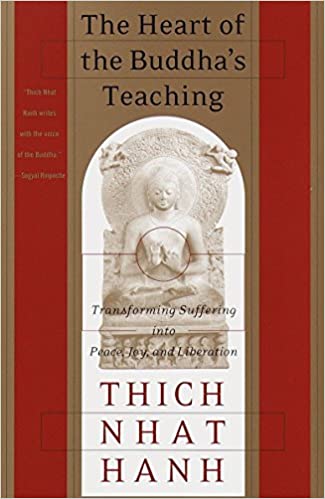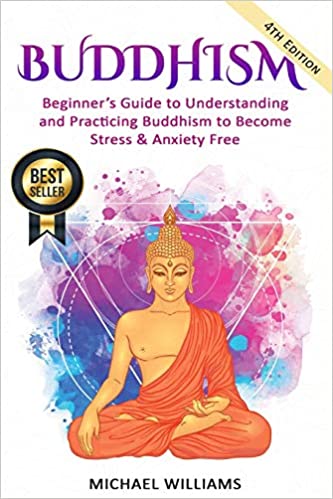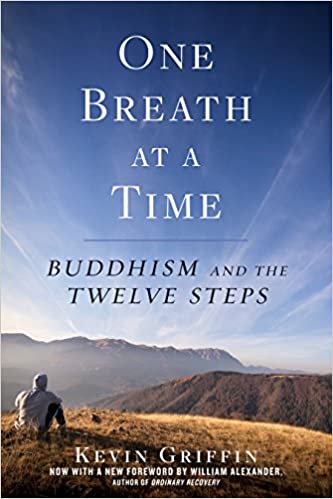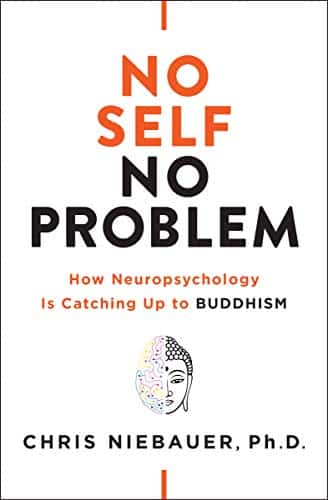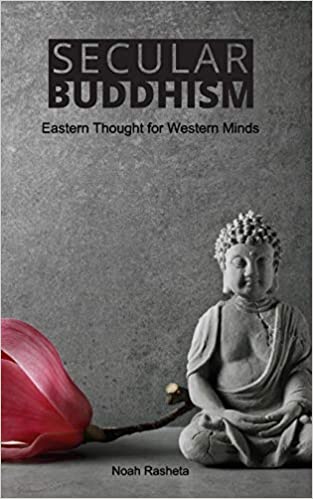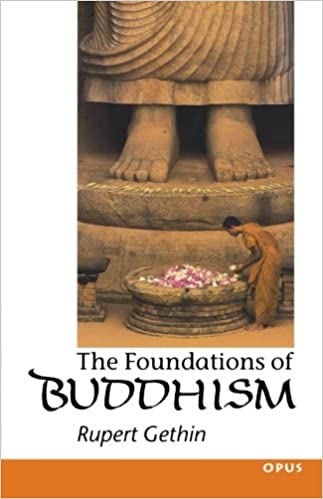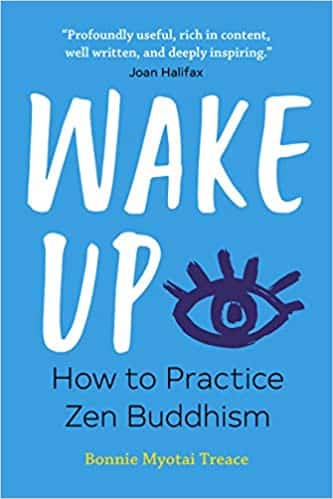
DISCLOSURE: This post may contain affiliate links, meaning when you click the links and make a purchase, I receive a commission. As an Amazon Associate I earn from qualifying purchases.
When looking to study the ancient religion of Buddhism, one can feel lost or overwhelmed, not knowing where to begin. Buddhism does not have a holy book to turn to for guidance and, if you live in a Western culture, finding someone to guide you along the teachings of the Buddha might not be possible.
There are many different ways to go about the teachings of Buddhism. Some include scientific approaches, while others include Zen, Mahayana or Theravada schools of thought.
What are the Best Buddhism Books to read?






Buddhism is centered around a few main teachings: Four Noble Truths, the Noble Eightfold Path, the Three Doors of Liberation, the Three Dharma Seals, and the Seven Factors of Awakening. As the religion dates back to 5 BCE, these teachings are complex, deep and interpreted differently by Buddhist practitioners and teachers.
If you’re looking to open your mind and soul to the teachings of the Buddha or deepening your knowledge and understanding of principles that you already practice, there are a few books that might help you on your journey to enlightenment.
Best Books on Buddhism: Our Top 20 Picks
Here are some of the best buddhism books that you can consider to expand your knowledge on the subject:
1. The Book of Joy: Lasting Happiness in a Changing World
The Book of Joy: Lasting Happiness in a Changing World is a conversation between two men who have found everlasting happiness and peace despite having experienced decades of exile and despair.
In 384 pages readers glimpse into the week His Holiness the Dalai Lama and Archbishop Desmond Mpilo Tutu spent together where they discussed how they have managed to find joy in the midst of suffering.
They confront the Obstacles of Joy telling each other, and the reader, what they are and how to overcome. Furthermore, the authors lay out the foundations of the Eight Pillars of Joy which lay the groundwork for living a life of true, unwavering happiness.
The Dalai Lama and the Archbishop’s week of conversations and embrace are broken down into three main conversations:
1. The Nature of True Joy: how to shift your perspective and birth Joy from Suffering
2. The obstacles to Joy: Fear, Anger, Sadness, Despair, Loneliness, Envy, Suffering and finally Illness & Death.
3. The Eight Pillars of Joy: Perspective, Humility, Humor, Acceptance, Forgiveness, Gratitude, Compassion and Generosity.
Finally, the book concludes with a guide to shift your everyday thinking in order to take thoughts that would otherwise be negative and turn them into joy with ease.
- Authors: Dalai Lama (Author), Desmond Tutu (Author), Douglas Carlton Abrams (Author)
- Publisher: Avery; Later prt. edition (September 20, 2016)
- Pages: 384 pages
2. The Art of Happiness, 10th Anniversary Edition: A Handbook for Living
Howard C. Cutler, M.D., is a psychiatrist, best-selling author, and speaker. A leading expert on the science of human happiness,
352 pages Originally published in 1999
The Art of Happiness, 10th Anniversary Edition: A Handbook for Living combines the knowledge and power behind Buddhist teachings with the practicality of science and psychology.
Dr. Howard C Cutler, a psychiatrist and best-selling author, interviews His Holiness the Dalai Lama in this 352-page book. This book is less of a guide to the teachings of Buddhism and more of a roadmap for how to live life as a wholly happy and peaceful being.
His Holiness the Dali Lama tells his stories firsthand and Dr. Cutler relays them to the reader, giving context for their meetings as well as his personal reflections of the discussions. The author even includes exact transcripts of the Dali Lama’s teachings. The 14th Dali Lama gives insight to his personal experiences that most would determine as loss, suffering and anger and explains how he has, through the teaching of the Buddha, made room for nothing other than joy – and how you can too.
- Authors: Dalai Lama (Author)
- Publisher: Riverhead Books; Anniversary edition (October 1, 2009)
- Pages: 352 pages
3. The Heart of the Buddha’s Teaching: Transforming Suffering into Peace, Joy, and Liberation
Author Thich Nhat Hanh is a Vietnamese monk and Zen master. In 1967, he was nominated for the Nobel Peace Prize by Martin Luther King, Jr.
In 304 pages, Thich Nhat Hanh gives a comprehensive guide to the essential teachings of the Buddha: The Four Noble Truths, the Noble Eightfold Path, the Three Doors of Liberation, the Three Dharma Seals, and the Seven Factors of Awakening.
This guide to Buddhism uses many metaphors to take abstract concepts and present them in a way that is similar to a real-life situation. The metaphors aid the reader in attaching meaning and definition to concept.
While doing so, the author breaks down each teaching into its most essential parts to make this book on Buddhist principals a well-written guide and a book that can be referenced time and time again.
If you are unsatisfied upon finishing this book and want to learn even more, Thich Nhat Hanh provides references to other Buddhist teacher’s works, canonical texts and other works of his own.
- Authors: Thich Nhat Hanh (Author)
- Publisher: Harmony; 1st Broadway Books trade pbk. ed edition (June 8, 1999)
- Pages: 304 pages
4. Why Buddhism Is True: The Science and Philosophy of Meditation and Enlightenment
Why Buddhism is True Is a personal account from author Robert Wright on his journey though meditation and the dissolution of the ‘self.’ In 336 pages, Wright uses psychology, neuroscience and philosophy to show how and why Buddhism is true.
This book is great for anyone who has knowledge of Buddhism but still has questions as to how to live the Buddhist lifestyle. Diving deeper, this book is for anyone who has questions that can’t be answered by typical Buddhist teachings and jargon.
This book gets to the heart of what really works about Buddhism on a scientific level – how meditation can change the way our brains function and therefore our view of the world and ourselves.
- Authors: Robert Wright (Author)
- Publisher: Simon & Schuster; Reprint edition (May 8, 2018)
- Pages: 336 pages
5. Buddhism Plain and Simple: The Practice of Being Aware, Right Now, Every Day
This is a proper book for anyone who is interested in Buddhism, awareness, mindfulness and being fully present in every moment. In 159 pages, Zen teacher Steve Hagen reiterates the fact that the teachings of the Buddha are rooted in awareness and being fully present. Therefore, they are unchanging and remain as solid today as they were when they were first brought to light.
Buddhism Plain and Simple focuses on the core teachings of the Buddha rather than the religious aspects. It holds true across all regions and cultures that turn to the Buddha for guidance. However, because it skips the religious teachings of the Buddha, it may not be the best place for a beginner to start.
- Authors: Steve Hagen (Author)
- Publisher: Broadway Books; Reprint edition (December 29, 1998)
- Pages: 159 pages
6. No-Nonsense Buddhism for Beginners: Clear Answers to Burning Questions About Core Buddhist Teachings
In his short and sweet guide to Buddhism, No-Nonsense Buddhism for Beginners: Clear Answers to Burning Questions About Core Buddhist Teaching, Noah Rasheta breaks down the principles of Buddhism into incredibly easy-to-digest language.
The 146-page book is written in a conversational Q&A-style in order to answer the reader’s most burning questions about Buddhism. While it doesn’t go to in-depth on Buddhist concepts and teachings, it is a great place to start your journey to enlightenment.
Furthermore, the book is broken down into four parts, each detailing a different aspect of Buddhism.
- The Buddha
- Key Buddhist Concepts
- The Buddha’s Teachings
- Current Buddhist Practices
If this simplistic style of teaching is beneficial to the reader, they may also listen to Noah Rasheta’s podcast Secular Buddhism.
- Authors: Noah Rasheta (Author)
- Publisher: Althea Press (May 15, 2018)
- Pages: 146 pages
7. Buddhism Without Beliefs: A Contemporary Guide to Awakening
Former monk Stephen Batchelor uses this book as a reminder. A reminder to not simply believe in the teachings of the Buddha but to put them into practice. Buddhism is not a religion that must be believed to be true. It is a foundation for life. Batchelor helps his readers along the journey back to the path of Buddhism in action.
Buddhism Without Beliefs is a short but powerful book. In 144 pages, the author challenges the reader to put aside the Noble Truths as they are, in fact, “ennobling truths” as they are a flawed system leading to uneasiness and suffering. The book may seem as if it is delivering a disappointing prognosis of one’s life, but it leaves the reader with hope that there is a remedy.
- Authors: Stephen Batchelor (Author)
- Publisher: Riverhead Books; 1st edition (March 1, 1998)
- Pages: 144 pages
8. Buddhism for Beginners
Buddhism for Beginners is written is a question-and-answer format that allows the reader to easily find the answers to their most burning questions like, “what is karma?” and, “how do I meditate?” while touching on the roots that built the Buddhist religion thousands of years ago.
Though Buddhism is an ancient religion, it remains ever relevant to the issues of the day. Chodron touches the Buddhist perspective of issues such as abortion, euthanasia and animal rights in this 160-page book.
- Authors: Thubten Chodron (Author)
- Publisher: Snow Lion; English Language edition (January 1, 2001)
- Pages: 160 pages
9. In the Buddha’s Words: An Anthology of Discourses from the Pali Canon (The Teachings of the Buddha)
This book is a deep dive into every detail of the teachings of the Buddha. Over the course of 512 pages, American scholar-monk, Bhikkhu Bodhi, provides translations of original teachings, selections from the earliest original record of what the Buddha taught and a biography on the Buddha, detailing his life, rebirth, suffering, liberation and practice.
In Buddha’s Words goes where not many books on Buddhism go. Because Buddhism does not have a sacred text that practitioners may refer to, some may find themselves frustrated. This book might contain the closest that Buddhism gets to having a proper scripture.
This book also features a forward by His Holiness the Dalai Lama.
- Authors: Bhikkhu Bodhi (Author), His Holiness the Dalai Lama (Foreword)
- Publisher: Wisdom Publications; Fifth Printing edition (July 28, 2005)
- Pages: 512 pages
10. Buddhism: Beginner’s Guide to Understanding & Practicing Buddhism to Become Stress and Anxiety Free (Buddhism, Mindfulness, Meditation, Buddhism For Beginners)
This beginner’s guide to Buddhism was written by Michael Williams, a world traveler and practitioner of Buddhism, yoga, meditation and happiness. His experience with different cultures around the world allows him to provide a first-hand account of what it means to practice a lifestyle such as his.
The 208-page book was published independently in 2016. The fundamentals of Buddhism are present in this book although the fundamentals of writing well might not be. Either way, this guide to Buddhism and the Buddhist lifestyle gets the point across in a language that any level practitioner can understand.
The Beginner’s Guide covers:
What Buddhism is
The main aspects of Buddhism
Yoga as a practice and lifestyle
The Four Noble Truths
How to practice mindfulness in order to reduce stress and anxiety
& more
If you are looking for a good intro book to Buddhism, this guide is a good place to start. It will give the reader a base layer they can use to then delve into more complex guides, teachings and practices.
- Authors: Michael Williams (Author)
- Publisher: CreateSpace Independent Publishing Platform; 4 edition (September 29, 2016)
- Pages: 208 pages
11. One Breath at a Time: Buddhism and the Twelve Steps
Author Kevin Griffin is a long-time Buddhist practitioner and a Twelve-Step program participant. His book One Breath at a Time aligns the teachings of the Buddha with the Twelve-Step program.
Those who are in recovery and are interested in the work of the Buddha may find this book extremely helpful in their journey. Griffin divulges his own story behind his path to sobriety and how Buddhism got him to where he is today.
His 304-page book delves into each of the most important aspects of Buddhism all while relating them back to the Twelve-Step program and the journey to recovery and enlightenment.
- Authors: Kevin Griffin (Author)
- Publisher: Rodale Books; Reissue edition (February 6, 2018)
- Pages: 304 pages
12. No Self, No Problem: How Neuropsychology Is Catching Up to Buddhism
No Self, No Problem is a unique book that directly connects Buddhism and neuropsychology. Author Chris Niebauer, Ph.D., publishes up-and-coming research that shows that our ego, or in Buddhist terms, Anatta, is created by the left side of our own brain.
In 184 pages, Dr. Niebauer stakes the claim that there is no such thing as the self, that it is merely an illusion that we have created for ourselves, and he backs it up with both scientific research and Buddhist ideals.
This book may put the minds at ease of those who are skeptical about worldly or ancient religions. Those who are looking for answers rooted in science and fact may find them within this book. The author traces neuropsychology to the first days of Buddhism and vice versa.
- Authors: Chris Niebauer Ph.D. (Author)
- Publisher: Hierophant Publishing (September 3, 2019)
- Pages: 192 pages
13. Secular Buddhism
Noah Rashta is a lay minister that is excellent at breaking down Buddhism into the most easily digestible teachings. Secular Buddhism is a quick 114-page read that has a conversational, easy-to-read tone. Rasheta intertwines his personal experiences with the Buddha’s path to enlightenment.
While the book does not go in-depth into the teachings of the Buddha, and therefore might not be for everyone, it is a great place for one to start their journey to enlightenment or something that one can pick up from time to time to gain a bit of extra knowledge.
Readers are invited to listen to the author’s podcast for more education and teachings of the Buddha.
- Authors: Noah Rasheta (Author)
- Publisher: Blurb (July 22, 2020)
- Pages: 114 pages
14. Buddhism: A Very Short Introduction (Very Short Introductions)
This book is part of a “Very Short Introduction” series that are published by Oxford University Press. Author of their Buddhism selection, Damien Keown, answered frequently asked questions as well as frequently mused-over dilemmas that pertain to Buddhism.
This is a great introductory book for anyone interested in Buddhism as a school of thought or anyone who is skeptical about the religion. The book is 184 pages of easy-to-read chapters that provide thoughtful answers to why and how Buddhism is used in modern life.
- Authors: Damien Keown (Author)
- Publisher: Oxford University Press; 2nd Edition (April 6, 2013)
- Pages: 184 pages
15. The Foundations of Buddhism (OPUS)
Author Rupert Gethin, co-founder of the Centre for Buddhist Studies at the University of Bristol, provides a reliable introduction to Buddhism. His 352-page book covers everything from the history of the religion to the differences between the factions that exist to the specifics of the teachings and principals.
Though the book may be a little dry, it is written as well as a university textbook may be written with a true scholarly flair to it. It touches on aspects of Buddhism that most books leave out including “Export Buddhism” and how to reach certain states of mind in meditation. He reminds readers that all that is available in Buddhism is within oneself.
- Authors: Rupert Gethin (Author)
- Publisher: Oxford University Press; 1st Edition (September 24, 1998)
- Pages: 352 pages
16. Wake Up: How to Practice Zen Buddhism
Sensei Bonnie Myotai Treace is a Zen master and teacher that has helped guide thousands of students on their path to a Zen life.
In her book Wake Up, Sensei provides a guide to practicing Zen in our everyday lives. This 146-page book allows the reader to learn and explore the teachings of the Buddha, transform the way you think about things and is accessible to practitioners at any stage of education.
This well-written book is an engaging and straightforward guide to practicing a Zen lifestyle. Sensei’s years of teaching show through her words and provide readers with the information that is necessary to becoming Zen.
- Authors: Bonnie Myotai Treace (Author)
- Publisher: Rockridge Press (October 22, 2019)
- Pages: 146 pages
17. Buddhism: One Teacher, Many Traditions
Because Buddhism is practiced all over the world, it might be hard to find commonality sometimes or understand where different practices stem from.
This 352-page book compares the Sanskrit traditions of Tibet and East Asia and the Pali traditions of Sri Lanka and Southeast Asia while illuminating the core teachings of the Buddha that remain unwavering around the world.
His Holiness the Dalai Lama and American Buddhist nun Thubten Chodro give a proper history lesson into Buddhism in this book in order to readers to fully understand the religion that they are interested in or already practicing.
- Authors: His Holiness the Dalai Lama (Author), Thubten Chodron (Author), Bhante Gunaratana (Foreword)
- Publisher: Wisdom Publications; Illustrated Edition (January 24, 2017)
- Pages: 352 pages
18. Buddhism: Introducing the Buddhist Experience
Author Donald W. Mitchell brings the reader on a journey through the last 2,500 years of Buddhist teachings and history. This book covers all factions of Buddhism around the world and may be one of the most comprehensive introductory books to Buddhism.
This 436-page book features primary sources such as photos, maps, essays and personal narratives by renowned Buddhists and scholars.
Buddhism: Introducing the Buddhist Experience is such an educational one that it is often assigned to university students for class. Here is where you will find all you need to know about the history and practice of the Buddhist way.
- Authors: Donald W. Mitchell (Author), Sarah H. Jacoby (Author)
- Publisher: Oxford University Press; 3rd Edition (October 30, 2013)
- Pages: 436 pages
19. An Introduction to Buddhism (Core Teachings of Dalai Lama)
Who better to provide the basics for Buddhism than the Dalai Lama himself? His Holiness takes it all the way back to basics with this book in a way that is easy to understand for beginners and serves as a reminder for current practitioners.
His Holiness starts with the basics of Buddhism in a way that is easy for the reader to digest and teaches how one may apply Buddhist principals to their everyday lives. Furthermore, His Holiness provides a commentary on some of the most integral texts of the Buddha including The Eight Verses on Training the Mind and Atisha’s Lamp for the Path to Enlightenment.
- Authors: The Dalai Lama (Author)
- Publisher: Shambhala (July 17, 2018)
- Pages: 136 pages
20. Buddhism as Philosophy: An Introduction
Mark Siderits, a professor of Philosophy at Illinois State University writes in a way that challenges the reader to think critically about Buddhism, the philosophers and the arguments that they make. Meanwhile, the author includes plenty of original Buddhist texts in order for the reader to better draw their own conclusion without another’s words clouding their judgment.
Sidreits’ teaching skills show through his writing in this 304-page book. While it is deeply educational and well-written, it is still easy enough for a beginner to understand.
- Authors: Mark Siderits (Author)
- Publisher: Hackett Publishing Company, Inc.; 5/31/07 Edition (June 15, 2007)
- Pages: 304 pages


